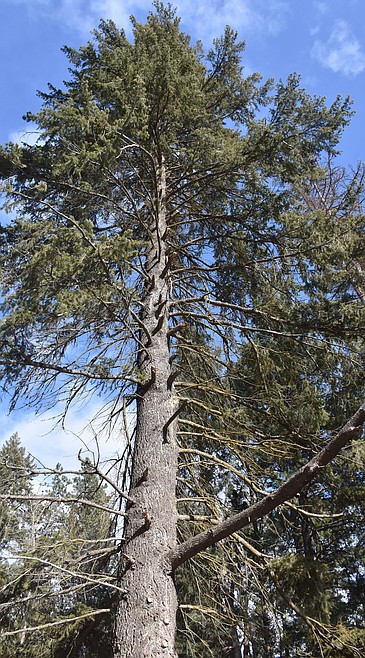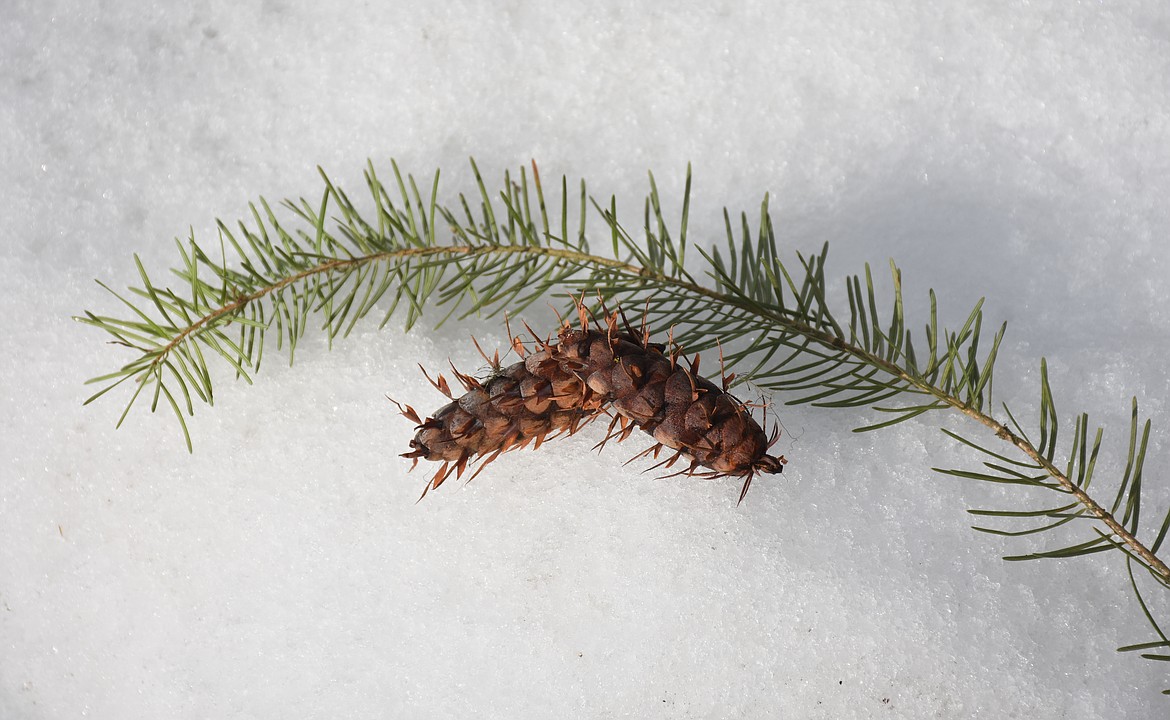About the Douglas fir
“The big tree is nature’s forest masterpiece, and so far as I know, the greatest of living things.” — John Muir 1838-1914 “Father of the National Parks” and author.
The Douglas fir tree is an evergreen conifer native to North America, most people recognize it as one of the most popular Christmas trees. Although Douglas fir is the most widely used name, it is also referred to as Oregon pine, red fir and Douglas spruce. Its botanical name, Pseudotsuga menziesii, literally translates to “false hemlock,” as it is not a true fir tree.
Douglas fir is one of the most prevalent trees in Idaho. It also has become the predominant species in locations throughout the state where ponderosa pine has decreased. The Douglas fir is distinguished by its compact, conical crown with sloping side branches. The species features needles that are flat and soft to the touch, about 1.5 inches in length sticking out in all directions from its branches, and “shaggy” looking seed cones, which are 3 to 4 inches long. The bark of young Douglas firs is smooth and gray. When the trees mature, the bark becomes dark, thick and furrowed.
This species grows rapidly, attaining a height in the Idaho forest at 120 years from 100 to 130 feet and a diameter of up to 3 or 4 feet. (Douglas firs found in moister Pacific Coast forests grow to heights of 250 feet and diameters of 8 feet.) Its life span is approximately 300 years.
The hanging oblong cones characteristically have three-pointed bracts (outer cone scales) that protrude from the cone scales. The cones mature in one season and retain their scales when they fall. True firs have cones that sit upright like little owls on their branches. The Douglas fir cone hangs down and stays intact when it falls to the ground.
Douglas fir trees have very thick, textured bark, which gives them the unique ability to withstand wildfires. The branches of very established trees are a significant distance away from the ground, which keeps their needles safer from fire. The ability to withstand wildfires gives them a leg-up in both survival and propagation. When a wildfire has cleared smaller shrubs and trees from an area, the Douglas fir tree is free to drop its seeds and sprout new life.
Native Americans used the wood of the Douglas fir tree to make small utensils, tools and fuel for the fire. The pitch could seal canoes, water containers and joints when building. Some animals that benefit from the foliage of the Douglas fir are grouse, deer and elk.
The timber from the Douglas fir tree is extremely strong and dense, making it great for building. In more recent times, the timber has produced large beams, wood fiber in paper manufacturing railroad ties and plywood veneer. The timber also makes furniture, fences and flooring.
Enjoy the trees and forests of Boundary County.



